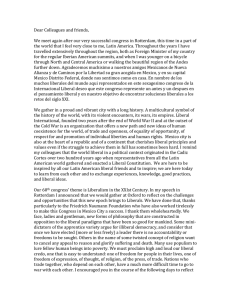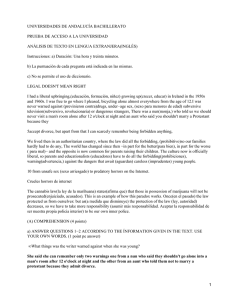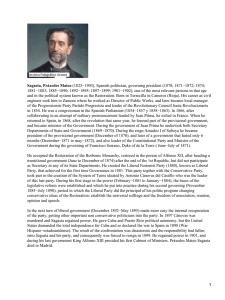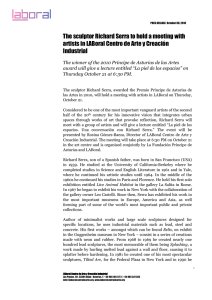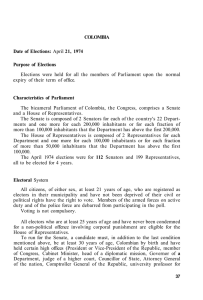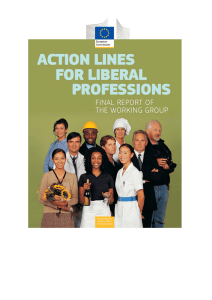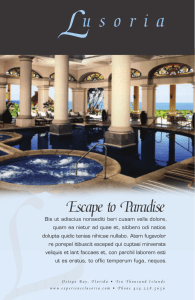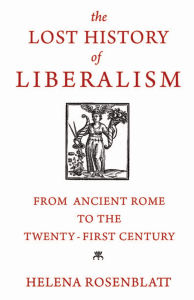Artes Liberales
Anuncio
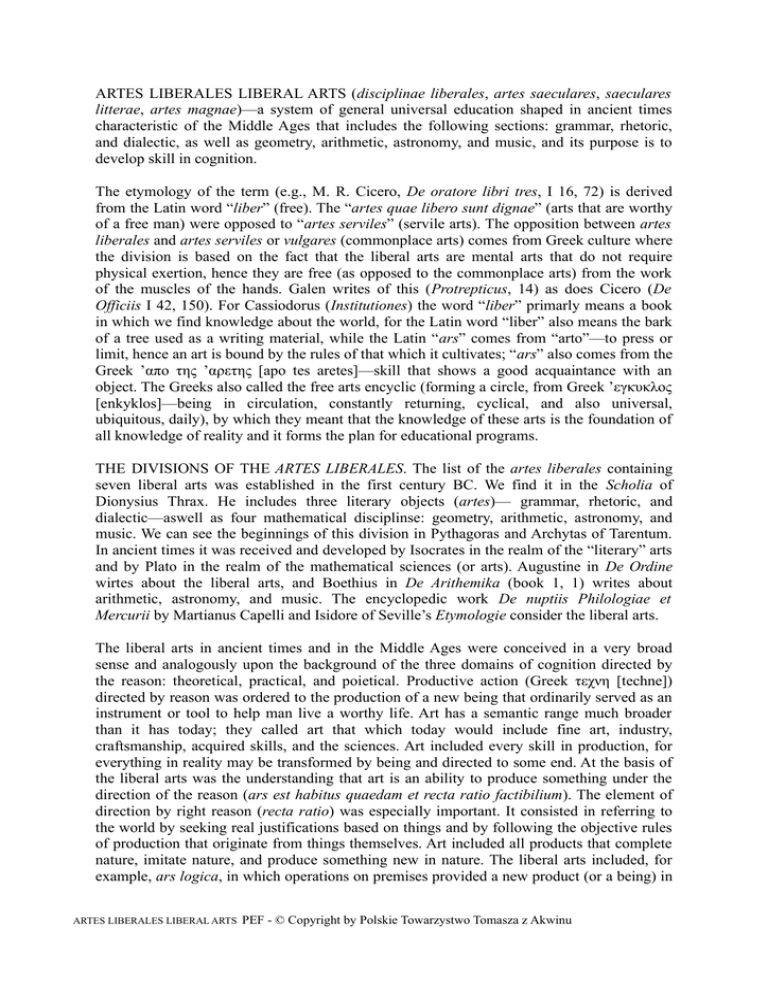
ARTES LIBERALES LIBERAL ARTS (disciplinae liberales, artes saeculares, saeculares litterae, artes magnae)—a system of general universal education shaped in ancient times characteristic of the Middle Ages that includes the following sections: grammar, rhetoric, and dialectic, as well as geometry, arithmetic, astronomy, and music, and its purpose is to develop skill in cognition. The etymology of the term (e.g., M. R. Cicero, De oratore libri tres, I 16, 72) is derived from the Latin word “liber” (free). The “artes quae libero sunt dignae” (arts that are worthy of a free man) were opposed to “artes serviles” (servile arts). The opposition between artes liberales and artes serviles or vulgares (commonplace arts) comes from Greek culture where the division is based on the fact that the liberal arts are mental arts that do not require physical exertion, hence they are free (as opposed to the commonplace arts) from the work of the muscles of the hands. Galen writes of this (Protrepticus, 14) as does Cicero (De Officiis I 42, 150). For Cassiodorus (Institutiones) the word “liber” primarly means a book in which we find knowledge about the world, for the Latin word “liber” also means the bark of a tree used as a writing material, while the Latin “ars” comes from “arto”—to press or limit, hence an art is bound by the rules of that which it cultivates; “ars” also comes from the Greek ’απο της ’αρετης [apo tes aretes]—skill that shows a good acquaintance with an object. The Greeks also called the free arts encyclic (forming a circle, from Greek ’εγκυκλος [enkyklos]—being in circulation, constantly returning, cyclical, and also universal, ubiquitous, daily), by which they meant that the knowledge of these arts is the foundation of all knowledge of reality and it forms the plan for educational programs. THE DIVISIONS OF THE ARTES LIBERALES. The list of the artes liberales containing seven liberal arts was established in the first century BC. We find it in the Scholia of Dionysius Thrax. He includes three literary objects (artes)— grammar, rhetoric, and dialectic—aswell as four mathematical disciplinse: geometry, arithmetic, astronomy, and music. We can see the beginnings of this division in Pythagoras and Archytas of Tarentum. In ancient times it was received and developed by Isocrates in the realm of the “literary” arts and by Plato in the realm of the mathematical sciences (or arts). Augustine in De Ordine wirtes about the liberal arts, and Boethius in De Arithemika (book 1, 1) writes about arithmetic, astronomy, and music. The encyclopedic work De nuptiis Philologiae et Mercurii by Martianus Capelli and Isidore of Seville’s Etymologie consider the liberal arts. The liberal arts in ancient times and in the Middle Ages were conceived in a very broad sense and analogously upon the background of the three domains of cognition directed by the reason: theoretical, practical, and poietical. Productive action (Greek τεχνη [techne]) directed by reason was ordered to the production of a new being that ordinarily served as an instrument or tool to help man live a worthy life. Art has a semantic range much broader than it has today; they called art that which today would include fine art, industry, craftsmanship, acquired skills, and the sciences. Art included every skill in production, for everything in reality may be transformed by being and directed to some end. At the basis of the liberal arts was the understanding that art is an ability to produce something under the direction of the reason (ars est habitus quaedam et recta ratio factibilium). The element of direction by right reason (recta ratio) was especially important. It consisted in referring to the world by seeking real justifications based on things and by following the objective rules of production that originate from things themselves. Art included all products that complete nature, imitate nature, and produce something new in nature. The liberal arts included, for example, ars logica, in which operations on premises provided a new product (or a being) in ARTES LIBERALES LIBERAL ARTS PEF - © Copyright by Polskie Towarzystwo Tomasza z Akwinu the form of the conclusion. In the liberal arts we are dealing in every case with some type of production, that is, the appearance of something new (a new being) in relation to the operation performed. It is especially important that the order of production should be rationally directed for the sake of an end according to which material, efficient forces, models and so forth are gathered. We construct the plan of production in advance in the intellect, and we later embody it in a definite material. Our cognition when it correctly constructs plans for producing a new reality in reference to the character of creativity it selects was described as factibile; it was the basis for the analogical conception of the liberal arts. The liberal arts (or sciences) in ancient times were marked by their close connection with philosophy. They were not only a preparation for philosophy but also contained many philosophical elements. The Greek ’εγκυκ lambda;ιος παιδεια (in particular the sciences connected with mathematics) was an introduction to philosophical speculation, and Augustine and Boethius also ascribed this role to the liberal arts. THE ARTES LIBERALES AND THEOLOGY. Cassiodorus in the Institutiones divinarum et saecularium litterarum observed that the aim of cognition should be the divine wisdom contained in the Holy Bible. He made the study of the liberal arts an introduction to the science of theology. This position became widespread in the Middle Ages. He also organized studies in this way in the Vivarium, a cloister he founded where he collected a considerable library in which a large portion was filled with works in the liberal arts. He divided science in general into the liberal arts, called the secular sciences (litterae saeculares), and the theological or divine sciences (litterae divinae). In the liberal arts he distinguished the mutually complementary artes (arts), and in the arts he listed grammar, rhetoric, and dialectic, and the disciplinae (sciences), and among the sciences he listed arithmetic, music, geometry, and astronomy. Art (ars) is an ability to produce contingent things that could be otherwise (artem esse habitudinem operatricem contingentium, quae se aliter habere possunt), hence the object and rules of art are variable and depend upon the subject with regard to the choice of object and the modes of operation. Science is concerned with things that could not be otherwise (disciplina vero est quae de his agit, quae aliter evenire non possunt), and so the object and rules of science are stable and the subject who practices science cannot change anything in the object and rules of science. In science the intellect takes a theoretical attitude (a purely cognitive attitude), as opposed to the active attitude in arts. The distinction between artes and disciplinae in the liberal arts, rooted in the division between the Greek τεχναι [technai] and επιστημαι [epistemai] marked the foundationjs of the division into the trivium and quadrivium, where the trivium was a necessary preparation for the quadrivium. The arts were divided into three humanistic arts called the trivium, the artes liberales triviales (artes rationales, sermocinales), and the four natural arts called the quadrivium, the artes liberales quadriviales (artes reales). This division set the school program and outlines the foundations for the way education was organized up to the French Revolution. In medieval universities, studies in the department of the facultas artium (the faculty of arts) in which the liberal arts were taught was an introductory preparation for further studies in the faculties of theology, law, and medicine. ARTES LIBERALES AND PHILOSOPHY. Hugh of St. Victor (Didascalion, II 9– 24)presented a detailed analysis of the problematic of the liberal arts. He made a list of these arts in the context of a general division of the science. At the same time he considered and developed the problematic of the arts that were called mechanicae (mechanical), earlier described as vulgar. This detailed analysis was characteristic of the Middle Ages. According ARTES LIBERALES LIBERAL ARTS PEF - © Copyright by Polskie Towarzystwo Tomasza z Akwinu to Hugh, philosophy includes the sciences that consider the essences of things, sciences that consider mores, and sciences that present reasons for all human acts and desires (philosophia est disciplina omnium rerum humanorum atque divinarum rationes plene investigans). There are four major sciences (theoretical, practical, mechanical, and logical) from which all the other sciences are derived. The theoretical sciences were invented for the sake of wisdom (the conceiving of things such as they are) and are aimed at the evil of ignorance. The practical sciences are for the sake of virtue (for the soul to behave in accord with nature, which is in accord with reason), and against vice. The mechanical arts are for the sake of what is necessary (that without which we cannot live, but without which we could live more happily), and against weakness. Logic was discovered for the sake of speech. In teaching logic is objectively the first. First the student must learn language, then the practical sciences, for virtue purifies the sight of the spirit which must be exceptionally acute in the theoretical sciences, and then the student would learn the mechanical arts. Hugh’s logic, since the Greek term “logos” means the same as the Latin “ratio” and “sermo”, includes logica rationalis (skill in thinking: dialectics, rhetoric), and logica sermonalis (the science of speech: grammar, dialectic, rhetoric). The theoretical sciences are: (1) theology (the object of theology is the invisible causes of visible things); (2) mathematics (the object of mathematics is the invisible forms of visible things), and within mathematics Hugh distinguishes arithmetic (the basic element is number understood as a separated quantity in itself), music (it also investigates different relations of numbers and its basic element is harmony), geometry, (it considers immobile space—the basic element is the point), and (3) astronomy (it considers motion, and the basic element is the instant or moment). Among the practical sciences Hugh distinguishes individual ethics which teaches the practice of the virtues in a person’s own life, economy which concerns how to preserve virtue in family life, and politics which concerns the mores of the nation and state. Artes mechanicae. The mechanical sciences (or arts) concern man’s action and are divided into seven arts; the criterion for division is the useful end indicated here which they serve: lanificium—the art of making clothes; armatura—the art that provides protection and tools for work; agricultura—the art of farming; venatio—the hunter’s art; medicina—the art of healing; navigatio—the art of travelling; theatrica scientia—the art of entertaining many people together (e.g., theater, the circus, contests). Hugh notes that one and the same act, e.g., healing, may belong to philosophy if we seek its underlying reasons and investigate the reasons for acting (e.g., the rational justification of the healing of diseases), and it may be excluded from philosophy when it is concerned only with execution or performance (e.g., healing as it belongs to the doctor). We may find a similar list of seven mechanical arts according to the utility of their ends in the writings of Radulphus de Campo Longo, called the Fiery (Ardens). Radulphus mentions the following: ars victuaria—the art of feeding people; ars lanificaria—the art of dressing people; ars architectura—the art of providing shelter; ars suffragatoria—the art of means of transport; ars medicinaria—the art of healing; ars negotiatoria—the skill of trading goods; ars militaria—the art of defence against an enemy. After the Middle Ages there was a radical univocalization in how the conception of art was understood. Upon this background the artes liberales were parceled out among many other domains: the sciences, fine arts, and technologies, hence they ceased playing any role in the general program of education. Francois Blondel in the mid-seventeenth century in a treatise on architecture, Cours de’architecture mentions architecture, poetry, music, the art of speaking, comedy, painting, sculpture, and dance, and says that in view of the action of beauty they are united by the fact that they are a source of pleasure for us. This formed the ARTES LIBERALES LIBERAL ARTS PEF - © Copyright by Polskie Towarzystwo Tomasza z Akwinu climate for the later division of the so-called fine arts, and later technology, from the artes mechanicae, the natural sciences, of the quadrivium. At present the revived movement of so-called perennialism in education and the programs that have arisen within it propose a return to an education based on the liberal arts and those in the movemnt see in such a program a real way of counteracting a declining level of education. H. I. Marrou, Histoire de l’education dans l’antique, P 1948, 19717 (Historia wychowania w starożytności [The history of education in antiquity], Wwa 1969); Krąpiec Dz [Works] II; P. Riche, Education of culture dans l’Occident barbare, VIe–VII3 siècles, P 1962, 19954 (Edukacja i kultura w Europie Zachodniej V–VII w. [Education and culture in Western Europe, fifth to seventh centuries], Wwa 1995); M. Markowski, Nauki wyzwolone i filozofia na Uniwersytecie Krakowskim w XV wieku [Liberal sciences and philosophy at Kraków University in the fifteenth century], SMed 9 (1968), 91–115; Actes du quatrième congrès international de philosophie médiévale, Mo, P 1969 (bibliogr.); Krąpiec, Dz [Works] XXIII; P. Jaroszyński, Metafizyka i sztuka, Wwa 1996. Maria J. Gondek ARTES LIBERALES LIBERAL ARTS PEF - © Copyright by Polskie Towarzystwo Tomasza z Akwinu
